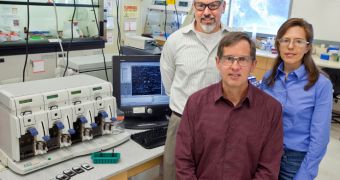Investigators from the US Department of Energy's (DOE) Lawrence Berkeley National Laboratory (Berkeley Lab) say that plants may have once had a complex immune system, just like our own. The only difference was that theirs was in the ground.
The team in California determined that plants used to defend themselves against the nefarious actions of pathogens by employing complex and extensive microbial communities around their roots. Mammals too have microbes within their bodies, for the exact same purpose.
Working together with colleagues from the Wageningen University, the Berkeley Lab experts were able to determine that plants use the same defense mechanisms to this day. They also analyzed a group of microorganisms that turns patches of soils into no-pathogen zones.
This is not the first time such an investigation was conducted. In previous instances, experts identified at least one of two microbes that were involved in fighting pathogens in the ground. The plants and their microscopic protectors are living in symbiosis.
This arrangement is mutually beneficial, experts say, which is why the two types of lifeforms evolved so that they can interact. What puzzled experts during this particular study was the fact that they did not discover just one or two microbe species, but rather a vast community of these organisms.
A recent study conducted on a sugar beet field determined that no less than 17 species of microbes were fighting an infection caused by a type of root fungus. Additionally, it was found that the microbes were working together in removing the threat.
The implications this work carries are profound. For instance, the new data could be used by chemists to develop new substances against plant infections. This could in turn lead to an increased degree of security in worldwide food production.
“Individual organisms have been associated with disease-suppressive soil before, but we demonstrated that many organisms in combination are associated with this phenomenon,” explains Gary Andersen.
“We now see that the complex phenomenon of disease suppression in soils cannot simply be attributed to a single bacterial group, but is most likely controlled by a community of organisms,” he add.
The expert, who is based at the Earth Sciences Division, conducted the new work together with fellow Berkeley Lab experts Todd DeSantis and Yvette Piceno. The team published details of its work in the May 5 issue of the top journal Science Express.

 14 DAY TRIAL //
14 DAY TRIAL //